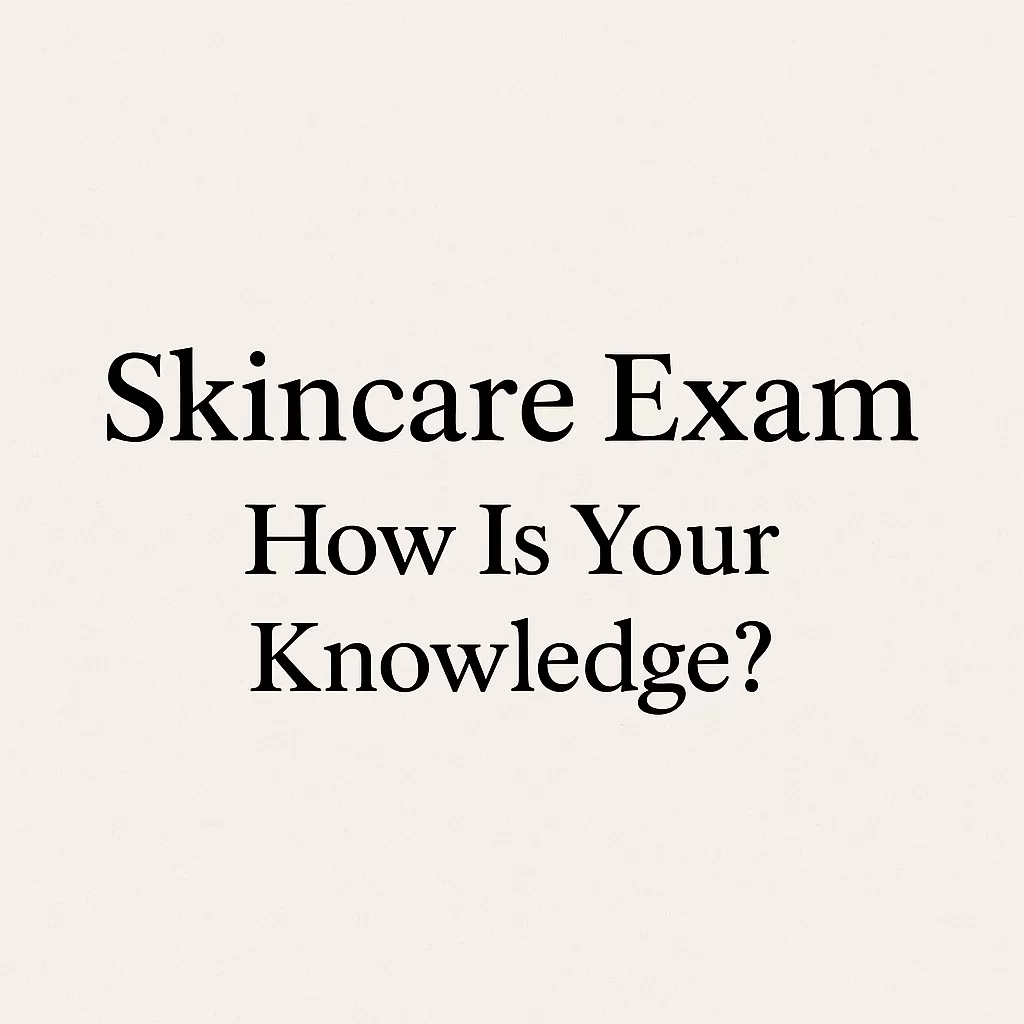Masterclass: Test Your Skincare Knowledge Like a Pro
Whether you’re a beauty school student, skincare enthusiast, or an aspiring esthetician, it’s time to see just how deep your skincare knowledge goes. This Skincare Exam article offers a professionally inspired skincare knowledge test—based on actual industry exams like CIDESCO, ITEC, and CIBTAC. Then, we’ll break down the answers and explore essential skin types and the best products for each.
Are you ready to put your expertise to the test?
EXAM TAKEN? Check out our recommended skincare products:
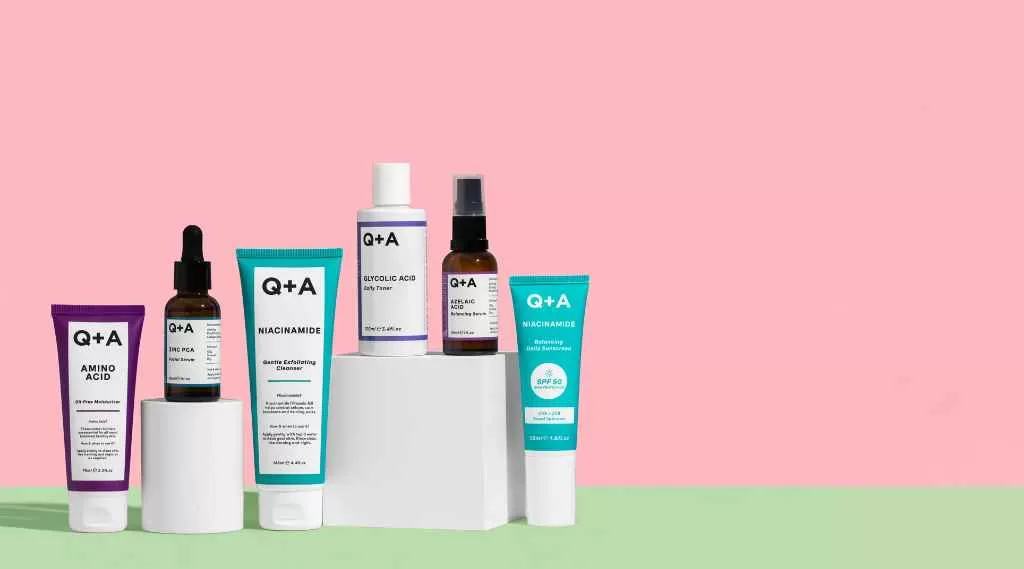
📝 Skincare Knowledge Test (Sample Exam Questions)
Section A: Multiple Choice Questions
- Which layer of the skin contains melanocytes?
a) Epidermis
b) Dermis
c) Hypodermis
d) Stratum corneum - Which of the following is considered a humectant?
a) Mineral oil
b) Glycerin
c) Lanolin
d) Shea butter - What is the ideal pH range for a facial cleanser?
a) 2–3
b) 5–6
c) 7–8
d) 9–10 - What is the function of ceramides in skincare?
a) Brighten skin
b) Exfoliate dead cells
c) Reinforce skin barrier
d) Prevent acne - Which skin type is characterized by tight pores, flakiness, and dullness?
a) Oily
b) Combination
c) Dry
d) Sensitive
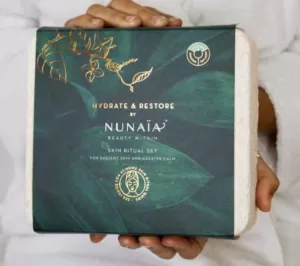
Nunaïa Hydrate & Restore Skin Ritual Set
1. Section B: True or False
- Salicylic acid is oil-soluble and good for treating acne.
- Sensitive skin always has a medical condition.
- Vitamin C helps with hyperpigmentation and collagen synthesis.
- SPF only needs to be applied once a day.
- Hyaluronic acid works best in dry air environments.
2.Section C: Short Answer Questions
- Describe the five main skin types.
- Explain the difference between physical and chemical exfoliants.
- List ingredients that benefit mature or aging skin.
- Outline the steps of a double-cleansing routine.
- What should be considered before a chemical peel treatment?
3. Section D: Skincare Case Study
- A 24-year-old client presents with oily skin, blackheads, and hormonal breakouts around the jawline.
a) Identify the skin type
b) Recommend a daily routine
c) Suggest two lifestyle adjustments
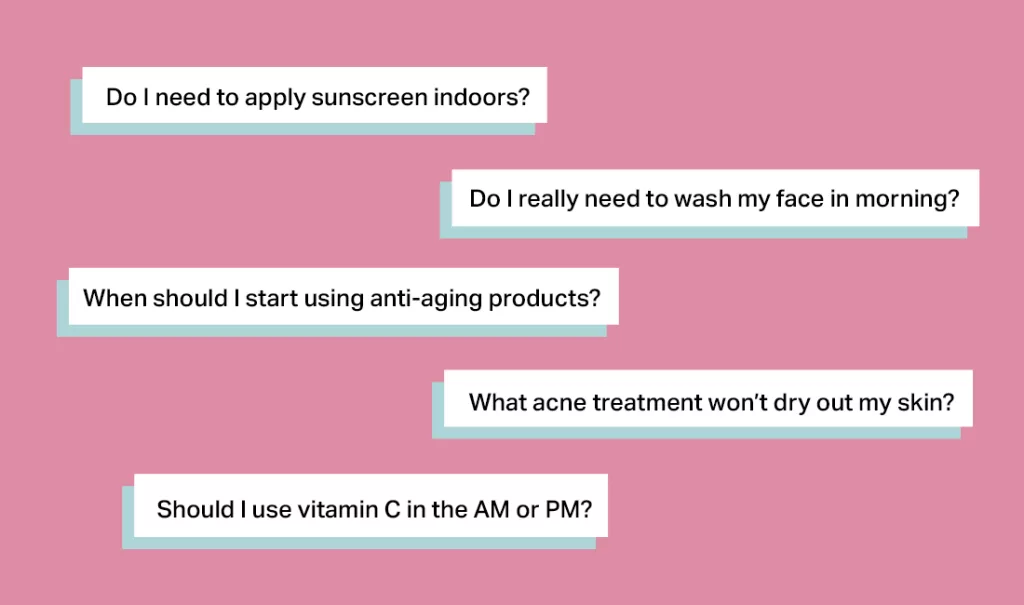
✅ Skincare Exam Answers & Explanations
2. Section A: Multiple Choice Answers
- a) Epidermis
Melanocytes are located in the basal layer of the epidermis and are responsible for melanin production. - b) Glycerin
Glycerin is a humectant, meaning it draws moisture into the skin from the environment. - b) 5–6
The skin’s natural pH is slightly acidic; a cleanser with pH 5–6 maintains the barrier without stripping. - c) Reinforce skin barrier
Ceramides are lipids that help restore the skin’s barrier and retain moisture. - c) Dry
Dry skin often appears dull, tight, or flaky due to lack of oil (sebum).
3. Section B: True or False Answers
- True – Salicylic acid penetrates oily skin and unclogs pores.
- False – Sensitive skin can be a condition or a reaction and isn’t always chronic or medical.
- True – Vitamin C is known for brightening and promoting collagen synthesis.
- False – SPF should be reapplied every 2 hours when exposed to sunlight.
- False – Hyaluronic acid attracts moisture but can backfire in dry air unless sealed with a moisturizer.
4. Section C: Short Answers
- The 5 Basic Skin Types:
- Normal: Balanced oil and moisture; no visible issues.
- Dry: Flaky, tight, dull; lacks oil.
- Oily: Shiny, enlarged pores, frequent acne.
- Combination: Oily T-zone with dry/normal cheeks.
- Sensitive: Easily irritated, redness, reactivity.
- Exfoliants:
- Physical: Uses scrubs or beads to remove dead skin. Can be abrasive.
- Chemical: Uses acids (AHA/BHA) to dissolve dead cells gently. Ideal for sensitive or acne-prone skin.
- Ingredients for Mature Skin:
- Retinol or retinaldehyde
- Peptides
- Niacinamide
- Hyaluronic acid
- Vitamin C
- Ceramides
- Double Cleansing:
- Step 1: Oil-based cleanser to dissolve makeup/sunscreen.
- Step 2: Water-based or gel cleanser to remove dirt, sweat, and impurities.
- Precautions Before Chemical Peels:
- Avoid retinoids or exfoliants 48 hours prior.
- Conduct patch tests.
- Understand contraindications (e.g., active breakouts, sunburn).
- Use SPF diligently after treatment.
5. Section D: Case Study Sample Answer
a) Skin Type: Oily
b) Routine:
Morning:
- Gel cleanser with salicylic acid
- Niacinamide serum
- Lightweight, oil-free moisturizer
- Broad spectrum SPF 30+ (matte finish)
Evening:
- Double cleanse (oil balm + foaming cleanser)
- BHA exfoliant (2–3 times a week)
- Retinol (mild strength)
- Oil-free night cream
c) Lifestyle Adjustments:
- Reduce intake of high-glycemic foods (sugar, white bread)
- Manage stress with sleep, hydration, and regular exercise
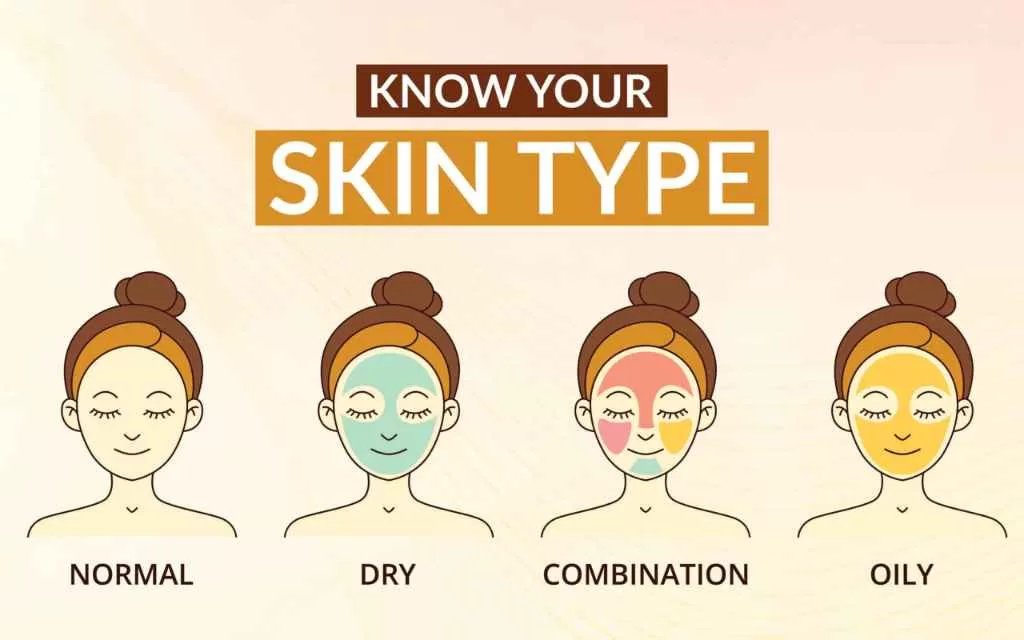
🔍 Understanding Skin Types and How to Treat Them
Knowing your skin type is fundamental to selecting effective skincare. Here’s a detailed breakdown:
🧴 1. Normal Skin
- Traits: Clear, balanced oil production, smooth texture
- Best Products:
- Gentle gel cleansers
- Hydrating serums with hyaluronic acid
- Lightweight moisturizers
- Daily SPF 30+
🌵 2. Dry Skin
- Traits: Flaky, tightness, dullness, fine lines
- Best Products:
- Cream cleansers or cleansing balms
- Moisturizers rich in ceramides and squalane
- Humectants like glycerin and hyaluronic acid
- Occlusives like petrolatum or shea butter
- Avoid harsh exfoliants
✨ 3. Oily Skin
- Traits: Enlarged pores, shine, frequent acne
- Best Products:
- Foaming cleansers with salicylic acid
- Niacinamide (oil regulation)
- Clay masks (1–2x per week)
- Oil-free, non-comedogenic moisturizers
- Mattifying sunscreens
🌗 4. Combination Skin
- Traits: Oily T-zone, dry cheeks
- Best Products:
- Balanced cleansers
- Spot treatments for oily areas (e.g., clay masks)
- Light moisturizers with glycerin or panthenol
- A/BHA serums in moderation
🌹 5. Sensitive Skin
- Traits: Redness, stinging, reactivity
- Best Products:
- Fragrance-free, hypoallergenic cleansers
- Soothing ingredients: aloe vera, calendula, centella asiatica
- Barrier-repair moisturizers with ceramides
- Avoid: alcohol, menthol, harsh exfoliants
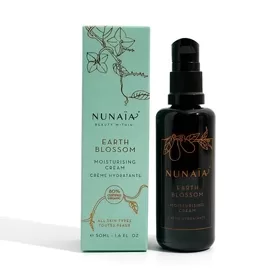
📘 Next Steps: Learn, Practice, Build Your Kit, and Protect Your Skin
Whether you’re studying to become a professional or refining your self-care ritual, this skincare knowledge test should challenge and teach you. Keep reviewing ingredients, understand your skin, and stay informed about product safety and formulation science.

FAQS: Skincare Exam
❓ What Is a Skincare Exam and Why Should You Take One?
A skincare exam is a structured assessment designed to test your knowledge of skincare fundamentals, product use, skin types, and treatments. It’s ideal for students, aspiring professionals, or enthusiasts who want to deepen their understanding and build credibility.
❓ How Can I Prepare for a Skincare Exam?
To prepare for a skincare exam, study topics like the anatomy of the skin, common skincare ingredients, product layering, sun protection, and treatment methods for various skin types. Practice with mock questions and use visual study aids or flashcards.
❓ Who Should Take a Skincare Exam?
A skincare exam benefits beauty school students, estheticians in training, dermatology assistants, and skincare enthusiasts who want to validate their knowledge or start a professional journey.
❓ Can I Use This Skincare Exam to Build My Skincare Kit?
Absolutely. By understanding your skincare needs and skin types through this skincare exam, you can make informed decisions when choosing cleansers, serums, moisturizers, and SPF tailored to your skin.
❓ What Products Should I Know About for the Skincare Exam?
You should familiarize yourself with cleansers for oily and dry skin, exfoliants (AHAs/BHAs), serums like Vitamin C and Niacinamide, moisturizers with ceramides or hyaluronic acid, and SPF 30+ sunscreens.
🧾 Summary: Skincare Knowledge Is Power
In summary, a strong understanding of skincare—from ingredients to application—is more than beauty; it’s science and self-care. This skincare exam equips you with the knowledge to assess skin types, select the right products, and apply them with confidence. Whether you’re studying for professional certification or building your own routine, each section reinforces the core principles of effective skincare. Let this be your starting point to informed choices and lasting results.
🔗 Explore More at Where and How Resources
To continue your skincare education, discover expert insights, product reviews, and detailed guides at Where and How Resources. Our platform is built for students, professionals, and beauty lovers alike—those who seek not just results, but understanding. From curated product lists to advanced treatment breakdowns, we help you build knowledge, confidence, and the perfect skincare kit.

